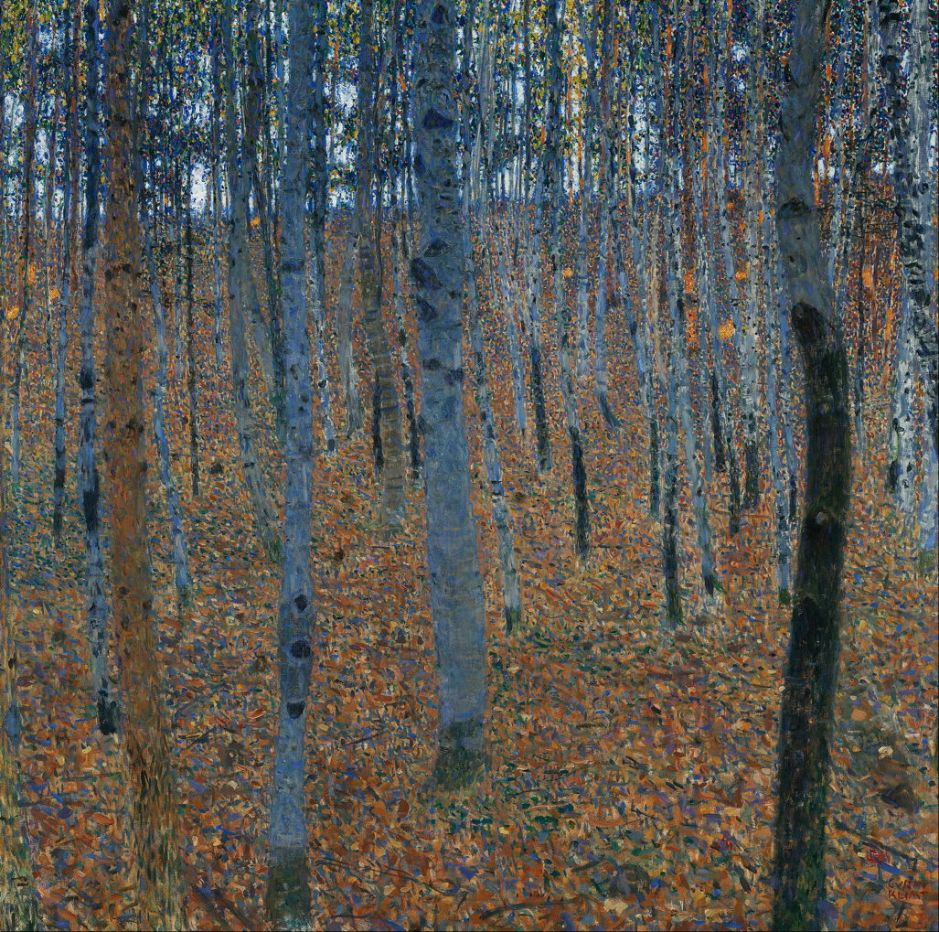Between the late nineteenth and early twentieth centuries, a wave of revolutions in art spread across Europe. In these, substantial groups of artists working in a wide range of media rejected the conservative standards maintained by Academies and Salons. These started in Paris and Munich, and spread quickly to Berlin and Vienna. Later movements in Poland and elsewhere, although not termed secessions, followed suit.
The most influential and enduring of them all is that in Vienna, led by the painter Gustav Klimt, which has become synonymous with Art Nouveau, and extended to glasswork, ceramics, furniture and architecture. This weekend I look at a small selection of paintings which show how diverse it was even in the graphic arts.
There is no such thing as a Vienna Secession style, but the members of the movement came together to provide an alternative to the Association of Austrian Artists, in their Vereinigung Bildender Künstler Österreichs (Union of Austrian Artists). Several of its leading members were architects, and a few were sculptors. Although it started in the early 1890s, the Vienna Secession was formed in 1897 and held its first exhibition the following year. The Secession’s first president was Gustav Klimt, and its honorary president Rudolf von Alt. In 1905, following their dissent over artistic matters, Klimt and several others left the Secession.

Klimt trained and worked not just as an artist, but as a craftsman too, and worked with other craftsmen to present his paintings in exactly the way that he envisaged. This painting of Pallas Athena (1898) is one of his first incorporating gold. Despite her modern appearance, Klimt remains true to tradition by showing her attributes, including the aegis of Medusa’s head over her upper chest, a spear and helmet.

Klimt devoted his life to painting, working hard in his studio, and painting when he went on holiday. Each summer, he stayed with his partner Emilie Flöge and her family, painting series of landscape works outdoors on uniform 110 cm (43 inches) square canvases. Unlike most tourists, though, Klimt didn’t go out and paint typical landscape views: he almost ignored the scenery around him, working instead on meticulously detailed depictions of the local countryside. One of the three landscapes he is believed to have painted in 1899 was this Tranquil Pond, with its closely observed reflections on the water surface.

The following year, he painted two remarkable studies of the texture and colour of the surface of the Attersee (1900), with unusual colour harmonies and painstakingly measured brushstrokes.

Back in Vienna, Klimt’s art centred on women, but unlike other artists of the day he is empowering rather than exploitative. In Judith I (1901), he portrays a woman of power, whose pleasure results from her successful manipulation of the enemy general, Holofernes, and her subsequent beheading of him, a popular theme in the art of women such as Artemisia Gentileschi. Klimt leaves the ambiguity of her ecstasy, playing on the developing link between eroticism and death.

His Portrait of Emilie Louise Flöge (1902) shows Klimt’s partner, a successful fashion designer in her own right. He believed in the role of the decorative in art, and this and many of his portraits and other works combine representative passages with exuberant flights of pure decoration.

When he was on his summer holiday in 1902, he worked painstakingly to build contrasting patterns into Beech Forest I. The fine Divisionist marks of the ground alternate with patches of light, brilliant green foliage, and distant sky to give this painting a unique appearance and visual effect, something distinctive of Klimt.

Another example is in his floral paintings, which started on holiday with works like this Cottage Garden with Sunflowers (c 1907), in turn feeding floral motifs he used to decorate the clothing and backgrounds of his figures.

Inspired by the early Byzantine mosaic showing the Empress Theodora, in the Basilica San Vitale in Ravenna, Italy, the peak of Klimt’s Golden Phase is unique in art. Much of the surface of his first Portrait of Adele Bloch-Bauer is encrusted with gold and silver, and decorated with symbols of eyes, flowers, whorls, ellipses divided into halves, and rich textures worked into the gold leaf. To accomplish this involved a great deal of craftsmanship, using age-old techniques developed before the Renaissance, and took long days handling delicate leaves of precious metal.
Unfortunately, it was his craftsmanship which drove Klimt to leave the Secession in 1905. He wanted the movement to include a rich range of media and arts, but others wanted it to be more restricted.

In other respects, Klimt remained quite traditional. His re-telling of the myth of Danaë (1907) isn’t a Symbolist fantasy, but a literal depiction of the myth in the artistic tradition. His tools and style, though, are highly original.

Klimt’s masterworks remain modern in their look, even though they are now over a century old. The Kiss (1907–08) would have been as sensational a decade ago as it was before the First World War. His major paintings tackle timeless themes using an ageless language.

Klimt believed that great art should look great, from its facture and frame to its overall look, and his choice of theme. In his second version of Judith (1909), he revisited the story of Judith and Holofernes, blurring it with that of Salome. The result is an even bolder examination of erotic power.

Klimt’s paintings draw us to look afresh at their subjects. Just as his figurative works offer novel views of woman, so his landscapes provide a new way to look at the world around us. With their depth removed, we distinguish form, structure, and meaning from their patterns, textures, and colours.
Tomorrow I’ll show a sample of paintings from other members of the Vienna Secession.

